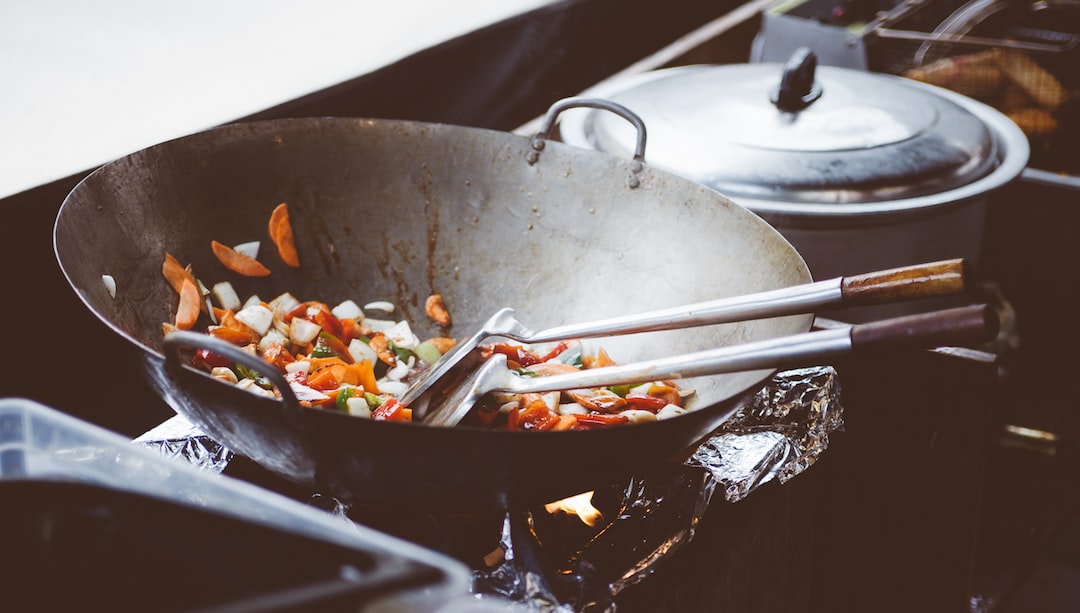Growing Fresh Spinach in a Pot: A Beginner’s Guide to Container Gardening

Container gardening is a method of growing plants in pots or containers instead of planting them directly in the ground. It is a popular choice for people who have limited space, such as those living in apartments or urban areas. Container gardening offers numerous benefits, including the ability to grow a variety of plants, flexibility in terms of placement and design, and the convenience of having fresh produce at home.
Key Takeaways
- Container gardening is a great way to grow plants in small spaces or without access to a traditional garden.
- Growing spinach in a pot has many benefits, including easy access to fresh, nutrient-rich greens and the ability to control growing conditions.
- When choosing a pot for spinach, consider size, drainage, and material.
- Spinach requires well-draining soil and regular fertilization to thrive in a container.
- There are many spinach varieties that are well-suited for container gardening, including baby spinach and savoy spinach.
Benefits of Growing Spinach in a Pot
Spinach is a highly nutritious leafy green vegetable that is packed with vitamins and minerals. It is an excellent source of vitamin K, vitamin A, vitamin C, iron, and folate. By growing spinach in a pot, you can ensure that you always have access to fresh and healthy spinach leaves. This is especially beneficial for those who are conscious about their diet and want to incorporate more nutrient-rich foods into their meals.
One of the main advantages of container gardening is its space-saving benefits. Growing spinach in a pot allows you to maximize your available space by utilizing vertical space or placing the pots on balconies or windowsills. This is particularly advantageous for those who have limited outdoor space or live in apartments where traditional gardening may not be feasible.
Another benefit of growing spinach in a pot is the convenience it offers. With a pot of spinach growing at home, you can easily harvest fresh leaves whenever you need them. This eliminates the need to make frequent trips to the grocery store and ensures that you always have access to fresh produce.
Choosing the Right Pot for Spinach
When choosing a pot for growing spinach, there are several factors to consider. First, you need to ensure that the pot is large enough to accommodate the root system of the spinach plant. Spinach has a relatively shallow root system, so a pot with a depth of at least 6 inches should be sufficient.
In terms of material, there are various options available for pots, including plastic, ceramic, and terracotta. Plastic pots are lightweight and easy to move around, while ceramic and terracotta pots are more aesthetically pleasing but can be heavier. Consider the overall look and feel of your garden when choosing the material for your pot.
Drainage is another important consideration when choosing a pot for spinach. Make sure that the pot has drainage holes at the bottom to allow excess water to escape. This will prevent waterlogged soil, which can lead to root rot and other issues.
Soil and Fertilizer Requirements for Spinach
| Soil and Fertilizer Requirements for Spinach | |
|---|---|
| Soil pH | 6.0-7.5 |
| Soil type | Well-drained, fertile soil |
| Nitrogen requirement | 1-2 lbs per 100 square feet |
| Phosphorus requirement | 0.5-1 lb per 100 square feet |
| Potassium requirement | 1-2 lbs per 100 square feet |
| Calcium requirement | 1-2 lbs per 100 square feet |
Spinach thrives in well-draining soil that is rich in organic matter. The ideal soil composition for spinach is a mixture of loam, compost, and sand. Loam provides good drainage, compost adds nutrients to the soil, and sand helps improve aeration.
When it comes to fertilizing spinach, it is important to provide it with the necessary nutrients for healthy growth. Spinach is a heavy feeder and requires regular fertilization. You can use either organic or synthetic fertilizers, depending on your preference.
Organic fertilizers, such as compost or well-rotted manure, are a popular choice among organic gardeners. They provide slow-release nutrients to the plants and improve the overall health of the soil. Synthetic fertilizers, on the other hand, provide an immediate nutrient boost to the plants but may not have long-term benefits for the soil.
Selecting the Right Spinach Variety for Container Gardening
There are several different types of spinach available, each with its own unique characteristics. When choosing a spinach variety for container gardening, it is important to consider factors such as growth habit, leaf size, and disease resistance.
Some of the best spinach varieties for container gardening include ‘Baby Leaf’, ‘Space’, and ‘Tyee’. These varieties have compact growth habits and produce tender leaves that are perfect for salads and cooking. They also have good disease resistance, which is important when growing spinach in a confined space.
When selecting a spinach variety, it is also important to consider your climate and growing conditions. Some varieties are better suited for cooler climates, while others can tolerate heat and humidity. Be sure to choose a variety that is well-suited to your specific growing conditions to ensure successful growth.
Planting Spinach Seeds in a Pot

To plant spinach seeds in a pot, start by filling the pot with the appropriate soil mixture. Moisten the soil before planting to ensure good seed-to-soil contact. Scatter the spinach seeds evenly over the soil surface, then cover them with a thin layer of soil.
The ideal planting time for spinach depends on your climate. In cooler regions, spinach can be planted in early spring or late summer for a fall harvest. In warmer regions, it is best to plant spinach in the fall or winter for a spring harvest. Check the seed packet or consult with a local gardening expert for specific planting recommendations for your area.
To ensure successful seed germination, keep the soil consistently moist but not waterlogged. Spinach seeds typically germinate within 7-14 days, depending on the temperature and moisture levels. Once the seedlings have emerged, thin them out to allow proper spacing between plants.
Watering and Maintaining Spinach in a Pot
Proper watering is crucial for the health and growth of spinach plants. Spinach requires consistent moisture but does not tolerate waterlogged conditions. Water the plants deeply whenever the top inch of soil feels dry to the touch.
One common mistake when watering spinach is overwatering. This can lead to root rot and other issues. To avoid overwatering, make sure that the pot has proper drainage and that excess water can escape freely.
In addition to watering, there are several other maintenance tasks that are important for healthy spinach plants. Regularly check for pests and diseases, and take appropriate action if any issues are detected. Remove any yellow or damaged leaves to promote new growth and prevent the spread of diseases.
Common Pests and Diseases in Spinach Container Gardening
Like any other plant, spinach is susceptible to pests and diseases. Some common pests that affect spinach include aphids, leaf miners, and slugs. These pests can cause damage to the leaves and reduce the overall health of the plant.
Symptoms of common spinach diseases include yellowing leaves, wilting, and stunted growth. Some common diseases that affect spinach include downy mildew, powdery mildew, and leaf spot. These diseases can be caused by fungal or bacterial pathogens and can spread quickly if not addressed.
To prevent pests and diseases in spinach container gardening, it is important to practice good sanitation and hygiene. Remove any dead or diseased leaves promptly, and keep the area around the pots clean and free from debris. Regularly inspect the plants for signs of pests or diseases, and take appropriate action if necessary.
Harvesting and Storing Fresh Spinach from a Pot
Spinach can be harvested when the leaves are young and tender, usually around 4-6 weeks after planting. To harvest spinach, simply cut off the outer leaves with a sharp pair of scissors or garden shears. Leave the inner leaves intact to allow for continued growth.
Freshly harvested spinach can be stored in the refrigerator for up to a week. To store spinach, wash the leaves thoroughly to remove any dirt or debris, then pat them dry with a clean towel. Place the leaves in a plastic bag or container and store them in the refrigerator crisper drawer.
Tips for Successful Spinach Container Gardening
To ensure successful spinach container gardening, here are some additional tips to keep in mind:
– Provide adequate sunlight: Spinach requires at least 4-6 hours of direct sunlight per day. Place the pots in a sunny location or use grow lights if necessary.
– Monitor soil moisture: Regularly check the moisture levels in the soil and adjust your watering schedule accordingly. Avoid overwatering, as this can lead to root rot.
– Rotate crops: To prevent nutrient depletion and reduce the risk of diseases, rotate your spinach crops every year. This means planting spinach in a different pot or location each year.
– Mulch the soil: Applying a layer of organic mulch, such as straw or shredded leaves, can help conserve moisture and suppress weed growth.
– Learn from others: Join online gardening communities or attend local gardening workshops to learn from experienced gardeners. They can provide valuable tips and advice specific to your region.
In conclusion, container gardening offers numerous benefits for growing spinach. By choosing the right pot, providing the appropriate soil and fertilizer, selecting the right spinach variety, and following proper planting and maintenance techniques, you can enjoy a bountiful harvest of fresh and nutritious spinach right at home. With a little bit of effort and care, you can successfully grow spinach in pots and enjoy the convenience of having fresh produce at your fingertips.



